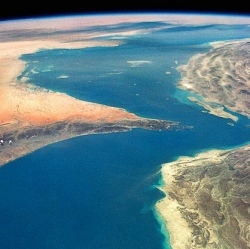
Scientists have developed models to help them identify planets in far-away solar systems that are capable of supporting life.
Estimates of habitable planet numbers have been based on the likelihood of them having surface water.
But a new model allows scientists to identify planets with underground water kept liquid by planetary heat.
The research was presented at the British Science Festival in Aberdeen.
Water is fundamental for life as we know it.
Planets too close to their sun lose surface water to the atmosphere through evaporation.
Surface water on planets located in the more frigid distant reaches from their sun is locked away as ice.
The dogma was, for water to exist in its life-giving liquid form, a planet had to be the right distance from its sun – in the habitable zone.
As Sean McMahon, the PhD student from Aberdeen University who is carrying out the work explained: "It’s the idea of a range of distances from a star within which the surface of an Earth-like planet is not too hot or too cold for water to be liquid.
"So traditionally people have said that if a planet is in this Goldilocks zone – not too hot and not too cold – then it can have liquid water on its surface and be a habitable planet"
But researchers are starting to think that the Goldilocks theory is far too simple.
